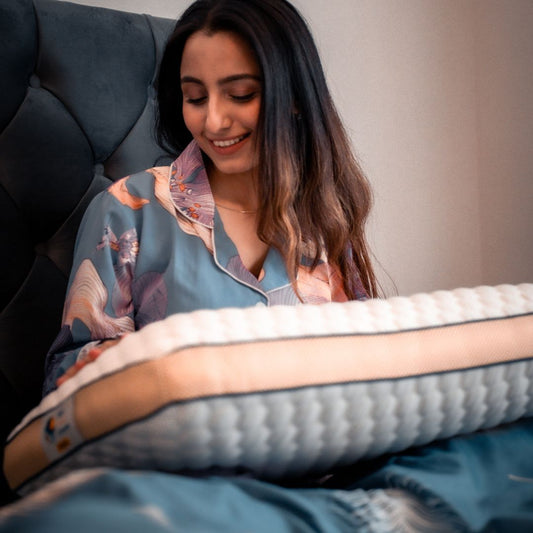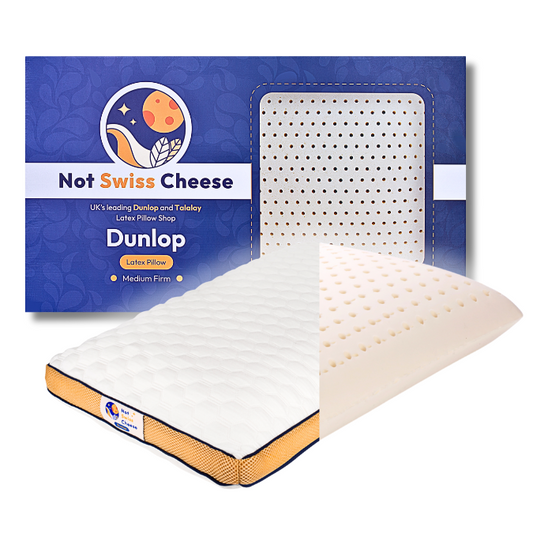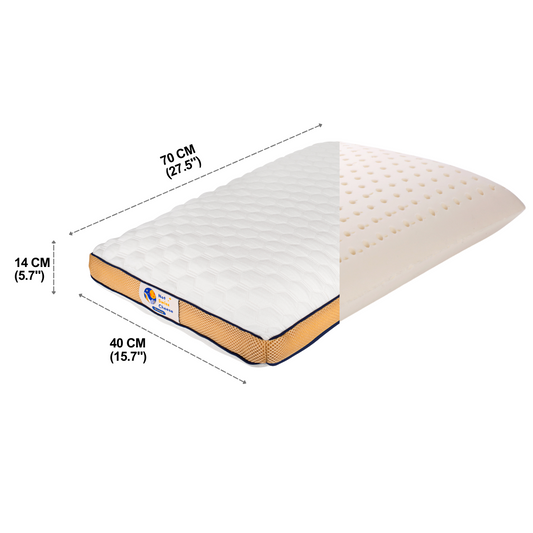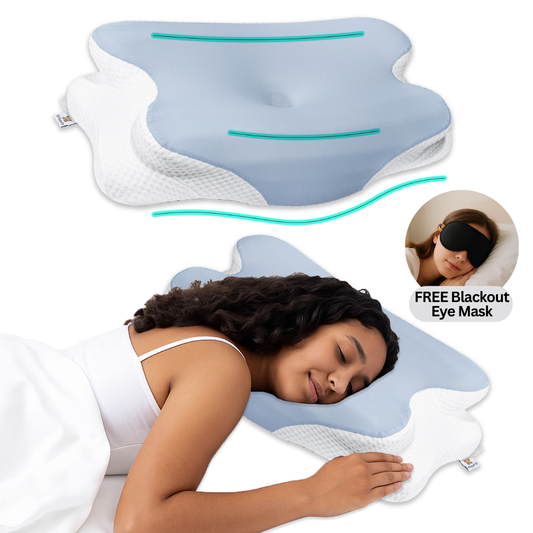Want to stay injury-free and maintain your mental energy? Focus on these three key elements: physical recovery, mental breaks, and quality sleep. Here's why they matter and how to improve them:
- Physical Recovery: Rest your muscles for at least 24 hours, eat protein after workouts, and stay hydrated. Proper recovery reduces injury risk and strengthens your body.
- Mental Detachment: Step away from work-related stress. Techniques like mindfulness, guided imagery, and setting tech boundaries can help recharge your mind.
- Sleep: Sleep 7–9 hours nightly. Lack of sleep increases injury risk by 1.7x and reduces alertness by 32%. Quality sleep improves physical and mental performance.
Quick Takeaway: Balanced recovery, mental relaxation, and good sleep are crucial for preventing injuries and boosting performance. Even small changes - like stretching after workouts, meditating, or improving your bedroom setup - can make a big difference.
Physical Recovery Basics
How Recovery Works
When you exercise, your muscles develop tiny tears, especially during activities involving eccentric movements. These micro-tears trigger an inflammatory response that peaks 24–48 hours after your workout. During this time, amino acids step in to rebuild and strengthen the damaged tissue.
Here’s how you can support this process:
- Rest each muscle group for at least 24 hours.
- Eat at least 20 grams of protein after working out.
- Stay hydrated to support recovery .
This repair process not only strengthens muscles but also plays a big role in avoiding injuries, which we’ll dive into next.
Recovery's Role in Preventing Injuries
Taking recovery seriously helps keep injuries at bay and supports overall physical health. Research has identified some key recovery challenges and their effects:
| Recovery Issue | Impact |
|---|---|
| Incomplete ACL rehabilitation | Increases the risk of graft rupture by 4 times |
| Not enough rest between workouts | Raises the likelihood of injury |
| Poor sleep habits | Affects 25% of American youths, who don’t get enough sleep |
"People who stretch during cool‐down tend to have fewer complaints of muscle soreness and fewer injuries."
For example, in sports rehab after ACL reconstruction, only 55% of athletes return to competitive sports. Re-injury rates range from 6% to 25%. These numbers highlight the importance of complete rehabilitation, good sleep, and proper recovery methods for staying healthy and performing well over the long term.
Mental Rest and Recovery
Understanding Mental Breaks
Taking time for mental recovery is essential to maintain energy and avoid burnout. Studies reveal that 33% of people experience extreme stress, and 73% say it negatively impacts their mental health. Mental breaks go hand in hand with physical recovery and good-quality sleep.
Psychological detachment - fully stepping away from work-related thoughts and stress - is key for recharging and improving mental health.
During the COVID-19 pandemic, limited opportunities for mental recovery took a toll on mental well-being. In the United Kingdom, the likelihood of major depression rose from 20% to 29%, and reports of poor life satisfaction jumped from 15.4% to 25.4% between the first and third national lockdowns.
Methods for Mental Rest
Here are some effective techniques to help you relax and mentally recharge. These methods encourage mental detachment and promote relaxation:
| Recovery Method | Primary Benefit |
|---|---|
| Breath Focus | Helps reduce immediate stress |
| Body Scan | Relieves physical tension |
| Guided Imagery | Quiets racing thoughts |
| Mindfulness Meditation | Boosts focus and mental clarity |
"Burnout is the equivalent to chronic stress in the extreme and paying immediate attention to it can be critical"
To make mental rest part of your daily life:
- Set technology boundaries: Dedicate specific times to unplug from devices like phones, laptops, and social media.
- Try active relaxation: Practices like yoga, tai chi, or qigong combine rhythmic breathing with gentle movements to help you unwind.
- Create mental space: Spend a few moments each day letting your mind rest without distractions.
"Practicing even a few minutes per day can provide a reserve of inner calm"
Emotional resilience also plays a role in mental recovery. Strengthen your support system, focus on gratitude and personal growth, and concentrate on what you can control while letting go of what you cannot.
Pairing these mental rest techniques with quality sleep and physical recovery creates a well-rounded approach to maintaining mental energy and avoiding burnout.
Sleep for Rehab: Pain, Injury, Performance & More
sbb-itb-7fb8e9c
Sleep's Impact on Health
Getting quality sleep is crucial for both physical and mental recovery. It helps repair tissues, prevents injuries, and keeps your mind sharp.
Sleep Stages Explained
Each night, your body cycles through several sleep stages 4–6 times, with each cycle lasting roughly 90 minutes. These stages play different roles in recovery and performance:
| Sleep Stage | Average Duration | Key Benefits |
|---|---|---|
| Stage 2 NREM | ~45% of total sleep | Supports memory and neural repair |
| Stage 3 NREM | ~25% of total sleep | Aids physical recovery, tissue repair, and boosts immunity |
| REM | ~25% of total sleep | Helps with learning, cognitive processing, and creativity |
These stages work together to repair your body and strengthen your immune and cognitive systems. For example, during Deep (Stage 3 NREM) sleep, your body repairs tissues, builds bone and muscle, and enhances immune defenses. REM sleep, marked by reduced muscle activity but heightened brain function, is essential for learning and processing new information.
Effects of Bad Sleep
On the flip side, poor sleep can take a toll on your body and mind:
Physical impacts:
- Sleeping less than 7 hours for two weeks raises the risk of musculoskeletal injuries by 1.7 times
- Slower reaction times and reduced coordination
- Hormonal imbalances and disrupted insulin response
Mental consequences:
- Poor sleep patterns may contribute to up to 15% of Alzheimer’s cases
- Just one night of sleep deprivation can increase beta-amyloid levels in the brain
- Reduced ability to learn and maintain focus
A Stanford study on basketball players who extended their sleep to 10 hours found:
- Free throw accuracy improved by 9%
- Three-point shooting accuracy also increased by 9%
- Faster sprint times
- Better overall physical and mental well-being
"Sleep helps everyone to retain and consolidate memories. When athletes practice or learn new skills, sleep helps form memories and contributes to improved performance in the future. Without sleep, the pathways in the brain that allow you to learn and make memories can't be formed or maintained." – National Institute of Neurological Disorders and Stroke (NINDS)
Other sports show similar results. Swimmers who got 10 hours of sleep reacted faster and performed better on turns, while tennis players who slept 9+ hours boosted their serve accuracy from 36% to 42%.
Natural Latex Pillows Guide
Natural latex pillows are designed to promote recovery and improve sleep quality by helping to keep the spine properly aligned.
Benefits of Latex Pillows
Natural latex pillows offer several perks that make them a great choice for sleep and recovery:
- Temperature Control: Their breathable design helps maintain a comfortable sleeping temperature.
- Spinal Alignment: They contour to the head and neck, ensuring proper alignment.
- Long-Lasting: These pillows retain their supportive shape for 5-10 years.
- Allergy-Friendly: Naturally resistant to dust mites, mold, and mildew, making them a great option for the 20 million Americans dealing with dust-mite allergies.
These features make latex pillows a solid option for those prioritizing recovery and comfort.
Comparing Dunlop and Talalay Latex

Dunlop and Talalay latex each cater to different sleep preferences. Here's a quick breakdown:
| Feature | Dunlop Latex | Talalay Latex |
|---|---|---|
| Density | Higher | Lower |
| Firmness | Medium-firm | Medium-soft |
| Best For | Back and stomach sleepers | Side sleepers |
| Recovery Support | Firm support for active recovery | Gentle, cushioned comfort |
| Durability | More durable | More breathable |
Choosing the Right Latex Pillow
The best latex pillow depends on your sleep position and recovery goals. Here's what to consider:
-
Side Sleepers:
- Opt for a higher loft pillow.
- Softer Talalay latex works well for cushioning.
- Place a pillow between your knees to help with hip alignment.
-
Back Sleepers:
- A medium loft pillow is ideal.
- Both Dunlop and Talalay latex can work, depending on your firmness preference.
- Look for a pillow that offers neck support while allowing your head to sink slightly.
-
Stomach Sleepers:
- Choose a pillow with minimal loft.
- Firmer Dunlop latex is a good option.
- Adding a thin pillow under your hips can help maintain spinal alignment.
Natural latex pillows also outshine memory foam when it comes to breathability and durability, making them a smart pick for active individuals looking to improve recovery and sleep quality.
The right latex pillow can enhance both physical recovery and mental relaxation, helping you stay energized and injury-free.
Daily Recovery and Sleep Tips
Setting Up Your Bedroom
Creating the right environment in your bedroom can make a big difference in how well you sleep. Studies suggest that the ideal temperature for sleep is about 65°F (18.3°C). Here are some key factors to focus on:
- Temperature Control: Aim to keep your room between 60–67°F (15.5–19.4°C). Use air conditioning or a fan to help your body cool down naturally at night.
- Light Management: Install blackout curtains to block outside light. Even minimal light exposure (over 10 lux) can lead to more nighttime awakenings and less deep sleep.
- Sound Optimization: Reduce noise disruptions with a white noise machine or earplugs.
Once your sleep environment is set, stick to a routine that supports these conditions.
Bedtime Routine Guide
A steady bedtime routine helps your body prepare for sleep. Dr. Rebecca Robbins from Harvard Medical School explains:
"Keeping a consistent fall asleep and wake schedule allows our brain to know when we want to be tired and when to be alert. In other words, when we keep our sleep times consistent, our internal circadian rhythm becomes more efficient, and subsequently, we are able to fall asleep faster and better consolidate our sleep."
This routine not only improves sleep but also helps you mentally disconnect from daily stress. Consider these steps:
- Power Down: Start winding down 30 minutes before bed. Activities like meditation, reading, or listening to calming music can help.
- Adjust Lighting and Temperature: Gradually lower the room temperature and dim the lights.
- Aromatherapy: Scents like lavender can encourage relaxation and prepare your mind for rest.
Rest and Activity Schedule
To fully recover, balance your daily activities with planned rest. Certified personal trainer Lindsey Corak emphasizes:
"If you don't give your body time to adapt to the physical demands, it will never get a chance to 'catch up' and get stronger."
A structured schedule can help prevent injuries and maintain energy levels:
- Cool down for twice as long as your warm-up period.
- Incorporate regular rest days into your routine.
- Adjust your activity level based on how fatigued you feel.
Recovery involves both physical rest and stepping away from mental stress. Research shows that sticking to a consistent sleep schedule improves emotional stability and helps sustain energy throughout the day.
Conclusion
Getting enough quality sleep, paired with proper physical recovery and mental relaxation, plays a key role in preventing injuries and maintaining mental energy. For instance, a Stanford study found that collegiate basketball players who slept 10 hours increased their free throw and three-point accuracy by 9%.
On the flip side, lack of sleep can delay healing by up to 30% and reduce pain tolerance by 15%. This highlights why experts emphasize rest as much as training and nutrition. Using the right tools, like supportive pillows, can further improve sleep quality and recovery.
Natural latex pillows, for example, adjust to the shape of your head and neck, offering comfort and support. Their elasticity and responsiveness make them a great option for athletes and active individuals looking to recover more effectively.
When quality sleep, mental relaxation, and proper support come together, they create the ideal conditions for both physical recovery and peak mental performance.








